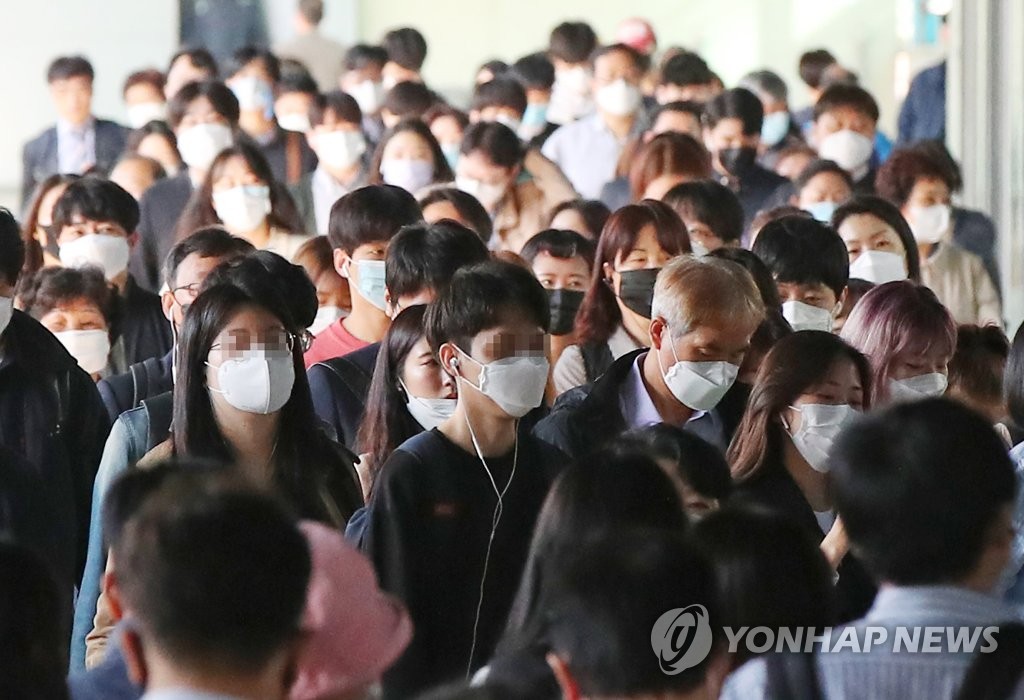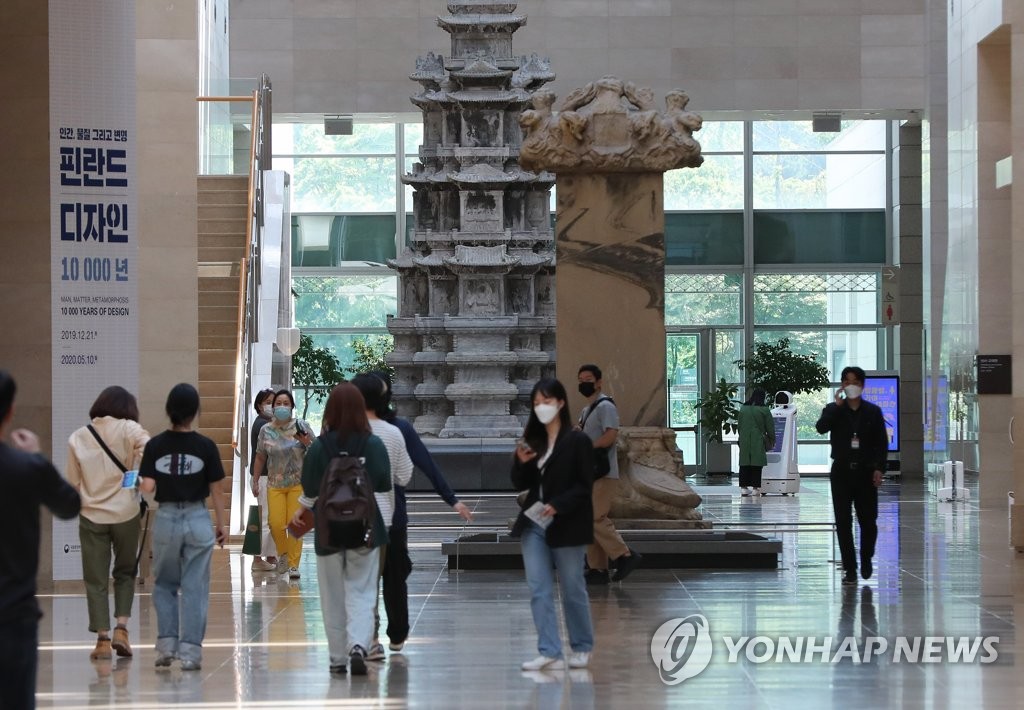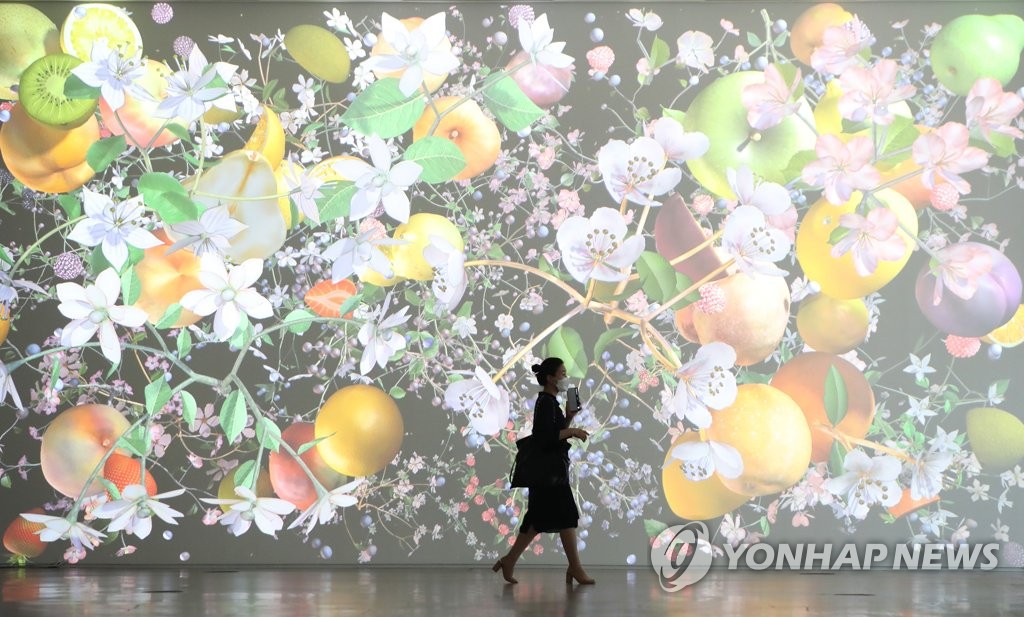- California Assembly OKs highest minimum wage in nation
- S. Korea unveils first graphic cigarette warnings
- US joins with South Korea, Japan in bid to deter North Korea
- LPGA golfer Chun In-gee finally back in action
- S. Korea won’t be top seed in final World Cup qualification round
- US men’s soccer misses 2nd straight Olympics
- US back on track in qualifying with 4-0 win over Guatemala
- High-intensity workout injuries spawn cottage industry
- CDC expands range of Zika mosquitoes into parts of Northeast
- Who knew? ‘The Walking Dead’ is helping families connect
S. Korea begins post-social distancing life with mix of hope, anxiety
South Koreans began an unprecedented post-social distancing life Wednesday, hopefully welcoming the transition yet remaining cautious over possible COVID-19 breakouts.
Starting Wednesday, South Korea has officially shifted to “everyday life quarantine” following more than two months of “intensive social distancing” in line with a consistent and continuous flattening of the country’s coronavirus curve.
Daily new infections peaked at 909 on Feb. 29, and the number has dramatically dropped to a single-digit level over the past few days. No local infections were reported for three straight days.
This means that as long as they follow the government’s new hygiene guideline, people can now take part in outdoor activities and mass-gathering events, such as working out at gyms, clubbing and attending Sunday religious services.



People wearing masks are seen commuting at Sindorim Station in southwestern Seoul on May 6, 2020. (Yonhap)
On the first day of new quarantine scheme, changes were not so apparent at first sight.
Most people on subways and buses wore face masks, with the exception of a handful of people who were wearing their masks lower or not wearing them at all as temperatures have gotten warmer here.
“My commute has become a bit more crowded,” said a 34-year-old office worker who uses subway lines No. 5 and 7 to go to work. “I feel that more people are starting not to wear masks.”
Streets in central Seoul were relatively busy as usual and commuting hour-crowds on public transportation remained similar to the past few weeks, as most large companies already began to shift to office working starting in April.
At the same time, the social changes are expected to start permeating into everyday life more in the coming weeks as public facilities, such as libraries, museums and galleries, reopen.
On the first day of the change, people still remained wary of visiting widely used institutions and facilities, although key public museums and galleries started accepting visitors on a limited basis.
At the National Museum of Korea, which reopened on Wednesday after more than two months of closure, visitors in face masks were seen touring around while keeping some distance from others.
The number of visitors fell far short of the maximum of 300 per hour, with 230 visitors at the 10 a.m. slot, which dropped to 113 for the 2 p.m. slot. Online booking numbers for this weekend remain sluggish, with 67 for the noon slot on Saturday.
For national art museums, it was a quiet first day after the coronavirus shutdown.
The National Museum of Modern and Contemporary Art (MMCA), with four local branches around the country, saw 386 visitors in total as of 3 p.m., while setting the maximum number of visitors at 1,720.
The MMCA will review whether to open for more people based on the spread of the virus.
Local governments also started accepting visitors to their key libraries, museums, galleries and sports facilities on a limited basis.
The Seoul metropolitan government said visitors to such facilities should make online reservations in advance and that the opening will be expanded in steps in the following weeks.
“We allow only 50 percent of the maximum capacity (of such institutions) at the early stage, and will continue to closely monitor where we can improve,” Seo Jeong-hyup, first vice mayor for administrative affairs, said during a press briefing.
“We will gradually expand the opening in the future after considering the virus spread, the number of users and opinions of officials and citizens,” he added.
The city government also said it plans to gradually reopen a public ice rink and swimming pool starting this month, as well as to reopen community child care support centers and welfare facilities for the elderly.
The city of Suwon, located 45 kilometers south of Seoul, opened three of its public museums for the first time in three months. The facilities allowed in only up to 50 visitors per hour for distancing. Individuals not wearing masks, as well as group tours, weren’t permitted.
The city of Cheongju, 370 kilometers southwest of Seoul, also opened its public zoo and national museum. Up to 100 visitors per hour were allowed into the museum.
Some local governments have decided to not yet lower their vigilance against potential outbreaks.
The provincial government of Jeju, South Korea’s most popular vacation destination, has extended its social distancing campaign for another two weeks. The island received over 196,000 visitors during the extended holidays that began last Thursday.
“A lot of tourists from all over the country visited Jeju and we expect more. Hence we are extending the high-level of quarantine until May 19,” said Lim Tae-bong, head of the provincial government’s welfare and sanitation division.
Daegu, once the nation’s epicenter for mass coronavirus outbreaks, is also maintaining a cautious stance.
“Daegu, unlike the rest of the country, cannot shift into everyday life quarantine just yet,” Kwon Young-jin, mayor of Daegu, announced Tuesday.
In early March, the southeastern city reported around 300 to 500 new patients per day due to massive testing of followers of the local branch of Shincheonji, a minor religious sect, but the number started to decrease in line with strict quarantine measures and social distancing drive.
“We cannot but remain focused on strict quarantine instead of hastily returning back to our past daily lifestyle,” Kwon said.
In general, most people welcomed the transition from the strict quarantine measure that had kept them at home for more than three months. South Korea has reported 10,806 cases as of Tuesday since reporting its first case on Jan. 20.
A poll of 3,725 adults by recruiting platform Saramin conducted in April had showed that while 77.6 percent understood the importance of social distancing, 79.7 percent said they felt exhausted from the campaign.
Some 74.8 percent of respondents said 2.6 months would be their psychological limit to endure the social distancing campaign, citing wearing masks and not being able to go outside as the biggest difficulties.
“I’m happy that I can finally start going to the gym,” said Jung Yu-ri, an office worker who had suspended her regular workouts after the social distancing measure took place.
“It seems situations are stabilizing relatively quickly. Of course we have to continue to be careful, but the fear of confronting the unknown has definitely eased.”
Some, however, voiced caution over shifting to normal life too soon.
“I was shopping at the department store over the weekend and felt that around one-third of people, especially younger people, were not wearing face masks,” said an office worker in her mid-thirties.
“Seeing Singapore’s case, I think we should continue to be vigilant. Wearing masks should be the least we should stick to.”
The commuting office worker agreed.
“I think we are at a ‘make or break’ moment. Hopefully, if we remain careful for the time being, things will be alright.”











